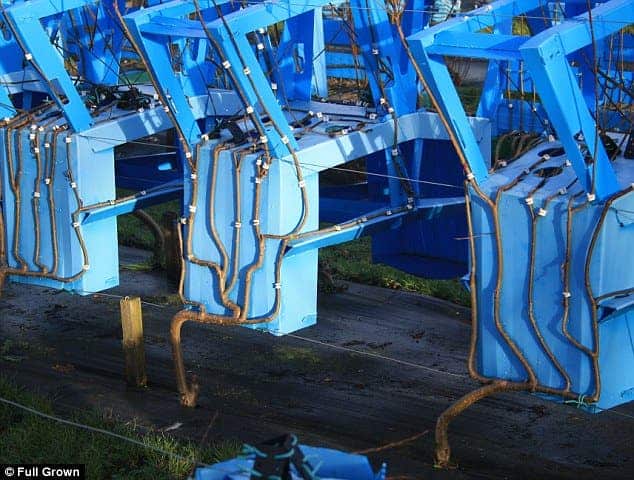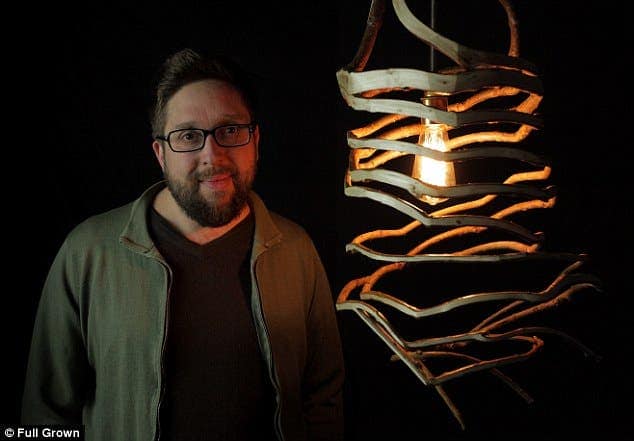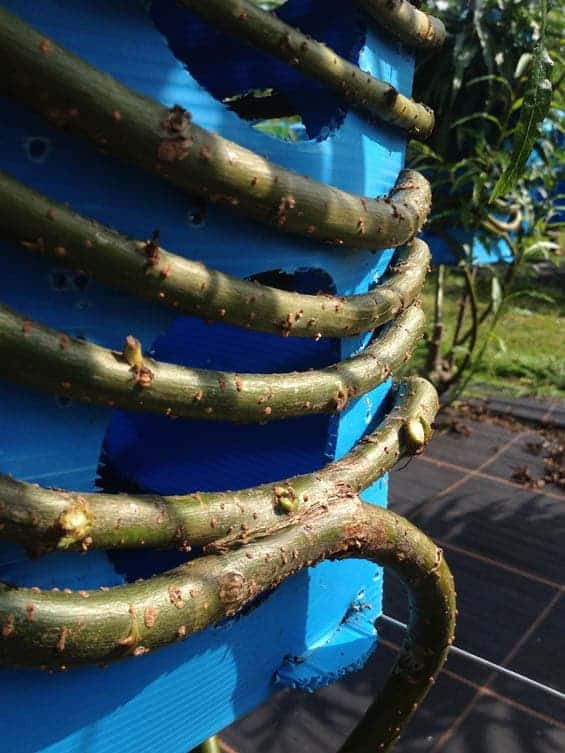Taking a radically opposite stance on how we design our furniture, designer and innovator Gavin Munro has come up with a unique way to create furniture. Instead of cutting wood and joining the pieces together, he simply grows trees into chairs or tables.
The idea is simple, yet innovative: let nature do all the work, and enjoy your eco-friendly furniture. Munro now spearheads a project called Full Grown, which currently grows 400 tables, chairs and lampshades which he hopes to harvest next year. He explains the process:
“You start by training and pruning young tree branches as they grow over specially made formers.
At certain points we then graft them together so that the object grows in to one solid piece – I’m interested in the way this is like a kind of organic 3D printing that uses air, soil and sunshine as its source material.
After it’s grown into the shape we want, we continue to care and nurture the tree as it thickens and matures before harvesting it in the Winter and then letting it season and dry. It’s then a matter of planing and finishing to show off the wood and grain inside.”
Working together with his wife Alice, Munro uses strong, fast-growing willow for his designs but he is also experimenting with ash, sycamore, hazel, crab apple, sessile oak and red oak. They grow the trees around frames and supports to give them the right shape, and even though the process takes a few years, in the end, you save a lot of time, resources and money because you don’t need any additional pieces (like nails or bolts), you don’t need to transport things together, and sanding, polishing and finishing are much easier. All in all, the resulting furniture takes less resources and is much greener than existing alternatives.
But according to Alice, the design is also more resilient.
“Just like a broken bone will be a lot stronger where it heals, the points where the wood is grafted are extremely strong.It means you don’t have joints which come lose like with a traditionally made chair so they should last a whole lot longer.”
The idea came to Munro when, as a kid, he saw an overgrown bonsai tree that looked remarkably like a chair. In time, the idea developed, just as he did, on a personal level.
“It’s where I learnt patience. There were long periods of staying still, plenty of time to observe what was going on and reflect. It was only after doing this project for a few years a friend pointed out that I must know exactly what it’s like to be shaped and grafted on a similar time scale.”
Of course, launching and developing a project like this is no easy feat – there’s much more to it than just placing a frame or a support on a tree and letting it grow – there’s a lot of pruning, grafting and detail work involved. But the Munros accepted the challenge and pushed on – even as a herd of cows destroyed most of their initial plantation.
The first pieces are set for harvest in 2016 and will go on sale later that year or in 2017 – but if you want one, hurry up, because most of them have already been pre-paid, even as the chairs are selling for £2,500 each and the light shades between £1,000 and £1,500.
Mr Munro, 39, a keen environmentalist, believes the technique (botanical manufacturing) could grow, and one day create sustainable and eco-friendly furniture on a much larger scale.















